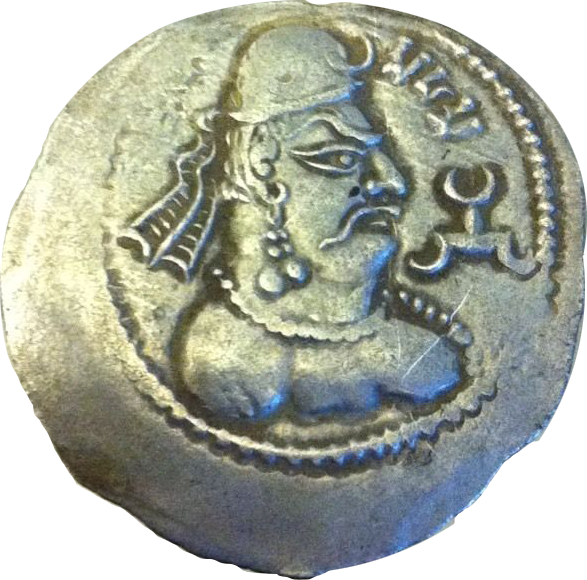Talagan copper scroll on:
[Wikipedia]
[Google]
[Amazon]

 The Talagan copper scroll, also known as Schøyen Copper Scroll (58 x 26 cm), was discovered and published in 2006 by Gudrun Melzer and Lore Sander. The scroll, dated to 492/3, mentions the four
The Talagan copper scroll, also known as Schøyen Copper Scroll (58 x 26 cm), was discovered and published in 2006 by Gudrun Melzer and Lore Sander. The scroll, dated to 492/3, mentions the four
Showcase 8
/ref> The scroll is in the
/ref> The scroll reads: The scroll was commissioned during the reign of

 The Talagan copper scroll, also known as Schøyen Copper Scroll (58 x 26 cm), was discovered and published in 2006 by Gudrun Melzer and Lore Sander. The scroll, dated to 492/3, mentions the four
The Talagan copper scroll, also known as Schøyen Copper Scroll (58 x 26 cm), was discovered and published in 2006 by Gudrun Melzer and Lore Sander. The scroll, dated to 492/3, mentions the four Alchon Huns
The Alchon Huns, ( Bactrian: αλχον(ν)ο ''Alchon(n)o'') also known as the Alchono, Alxon, Alkhon, Alkhan, Alakhana and Walxon, were a nomadic people who established states in Central Asia and South Asia during the 4th and 6th centuries CE. ...
kings Khingila
Khingila I ( Bactrian: χιγγιλο ''Khingilo'', Brahmi script: ''Khi-ṇgi-la'', Middle Chinese: 金吉剌 ''Jīnjílà'', Persian: شنگل ''Shengel''; c.430-490) was the founding king of the Hunnic Alkhan dynasty ( Bactrian: αλχανο ...
, Toramana
Toramana also called Toramana Shahi Jauvla ( Gupta script: ''Toramāṇa'', ruled circa 493-515 CE) was a king of the Alchon Huns who ruled in northern India in the late 5th and the early 6th century CE. Toramana consolidated the Hephthalite p ...
, Javukha, and Mehama
Mehama ( Bactrian: ''Meyam'', Brahmi: ''Me-ha-ma''), ruled c.461-493, was a king of Alchon Huns dynasty. He is little known, but the Talagan copper scroll mentions him as an active ruler making a donation to a Buddhist stupa in 492/93.For an imag ...
(who was reigning at the time) as donors to a Buddhist reliquary stupa
A stupa ( sa, स्तूप, lit=heap, ) is a mound-like or hemispherical structure containing relics (such as ''śarīra'' – typically the remains of Buddhist monks or nuns) that is used as a place of meditation.
In Buddhism, circumamb ...
.For an image of the copper scroll: Coin Cabinet of the Kunsthistorisches Museum ViennShowcase 8
/ref> The scroll is in the
Sanskrit
Sanskrit (; attributively , ; nominally , , ) is a classical language belonging to the Indo-Aryan branch of the Indo-European languages. It arose in South Asia after its predecessor languages had diffused there from the northwest in the late ...
language written in the Brahmi
Brahmi (; ; ISO 15919, ISO: ''Brāhmī'') is a writing system of ancient South Asia. "Until the late nineteenth century, the script of the Aśokan (non-Kharosthi) inscriptions and its immediate derivatives was referred to by various names such ...
script.A Note on the Schoyen copper scroll Bactrian or Indian? by Etienne de la Vaissier/ref> The scroll reads: The scroll was commissioned during the reign of
Alchon Huns
The Alchon Huns, ( Bactrian: αλχον(ν)ο ''Alchon(n)o'') also known as the Alchono, Alxon, Alkhon, Alkhan, Alakhana and Walxon, were a nomadic people who established states in Central Asia and South Asia during the 4th and 6th centuries CE. ...
ruler Mehama
Mehama ( Bactrian: ''Meyam'', Brahmi: ''Me-ha-ma''), ruled c.461-493, was a king of Alchon Huns dynasty. He is little known, but the Talagan copper scroll mentions him as an active ruler making a donation to a Buddhist stupa in 492/93.For an imag ...
in 493/94, slightly after the occupation of the Buddhist area centered on Taxila
Taxila or Takshashila (; sa, तक्षशिला; pi, ; , ; , ) is a city in Punjab, Pakistan. Located in the Taxila Tehsil of Rawalpindi District, it lies approximately northwest of the Islamabad–Rawalpindi metropolitan area and ...
around 460, but before the major invasions of the Indian mainland, known as the "Hunnic Wars" (from 496 to 534). Besides Mehama, the Alkhan kings Khingila, Toramana and Javukha are also listed as donors, although it is not known whether they were still alive, or whether their named were just summoned for the dedication.
The location of Talagan mentioned in the text is unclear and subject to debate. Talagan may be a region in Bactria
Bactria (; Bactrian: , ), or Bactriana, was an ancient region in Central Asia in Amu Darya's middle stream, stretching north of the Hindu Kush, west of the Pamirs and south of the Gissar range, covering the northern part of Afghanistan, southwe ...
(east of the city Kunduz
, native_name_lang = prs
, other_name =
, settlement_type = City
, image_skyline = Kunduz River valley.jpg
, imagesize = 300
, image_alt =
, image_caption =
, image_ ...
in North Afghanistan
Afghanistan, officially the Islamic Emirate of Afghanistan,; prs, امارت اسلامی افغانستان is a landlocked country located at the crossroads of Central Asia and South Asia. Referred to as the Heart of Asia, it is bordere ...
) or an area in Punjab
Punjab (; Punjabi: پنجاب ; ਪੰਜਾਬ ; ; also romanised as ''Panjāb'' or ''Panj-Āb'') is a geopolitical, cultural, and historical region in South Asia, specifically in the northern part of the Indian subcontinent, comprising ...
, north of the Salt Range
The Salt Range ( pnb, ) is a mountain range in the north of Punjab province of Pakistan, deriving its name from its extensive deposits of rock salt. The range extends along the south of the Potohar Plateau and the north of the Jhelum River. The ...
.
References
{{reflist Indian inscriptions